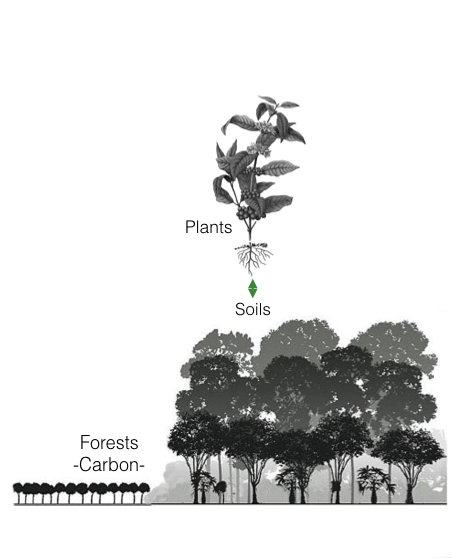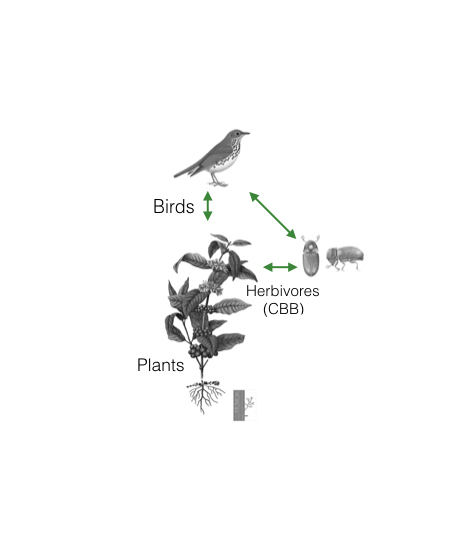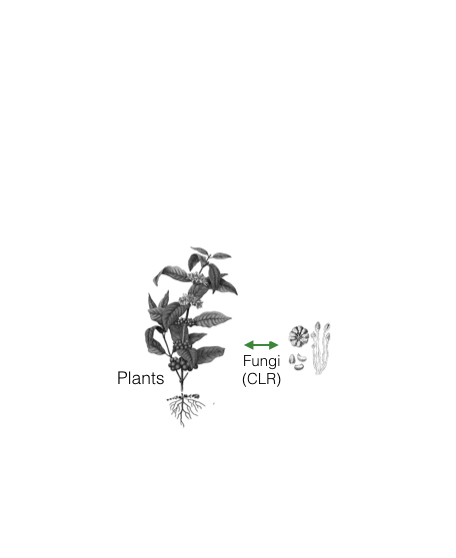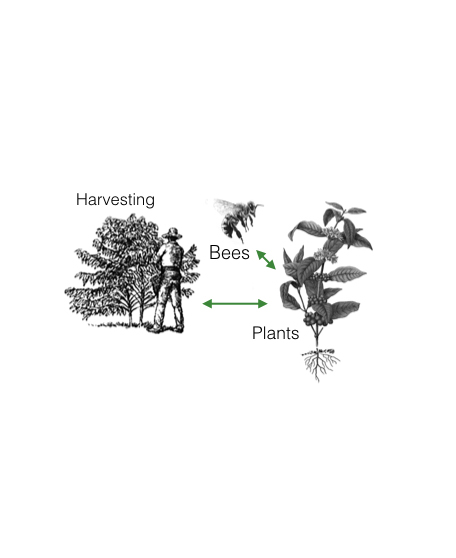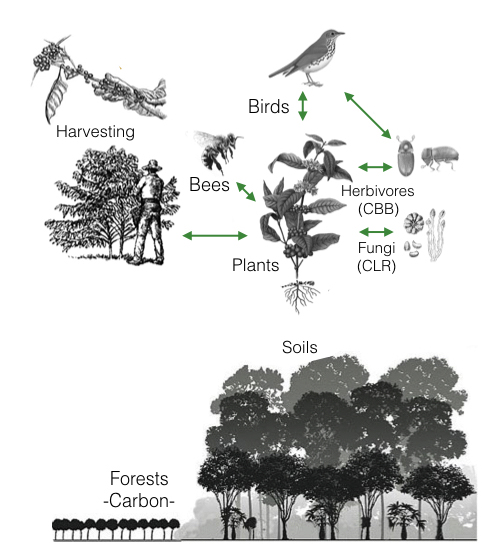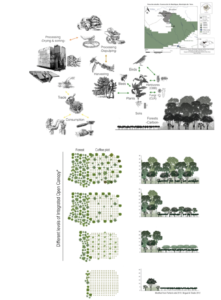Collaborative Research: Designing a Sustainable Agricultural Production System
through Convergence Research Using a Multi-Scale Ecosystems Approach
Phase 1: Understanding coffee farms and farmers
The structure of coffee plantations has considerably changed throughout the years. When the plant was brought to the Americas, it was mainly grown in the understory of diverse tropical forests, most likely maintaining its functional ecological resemblance with undisturbed forests. Now, coffee is typically grown in biodiversity hotspots, or areas with high biological diversity threatened by human action, and its associated ecological community has been largely reduced as plantations have been largely simplified, and forests around degraded. Coffee is now typically grown in the understory of shaded areas with a low diversity of trees (commercial polycultures), or with no trees at all. This has reduced not only biodiversity as a whole but also the ecological functionality that sustained the autonomy and productivity of coffee production. Many of these changes are associated with changes in coffee markets and new requirements of the coffee value chain, influencing not only the resource base but also the livelihoods and ways of life of farmers dedicated to coffee production.
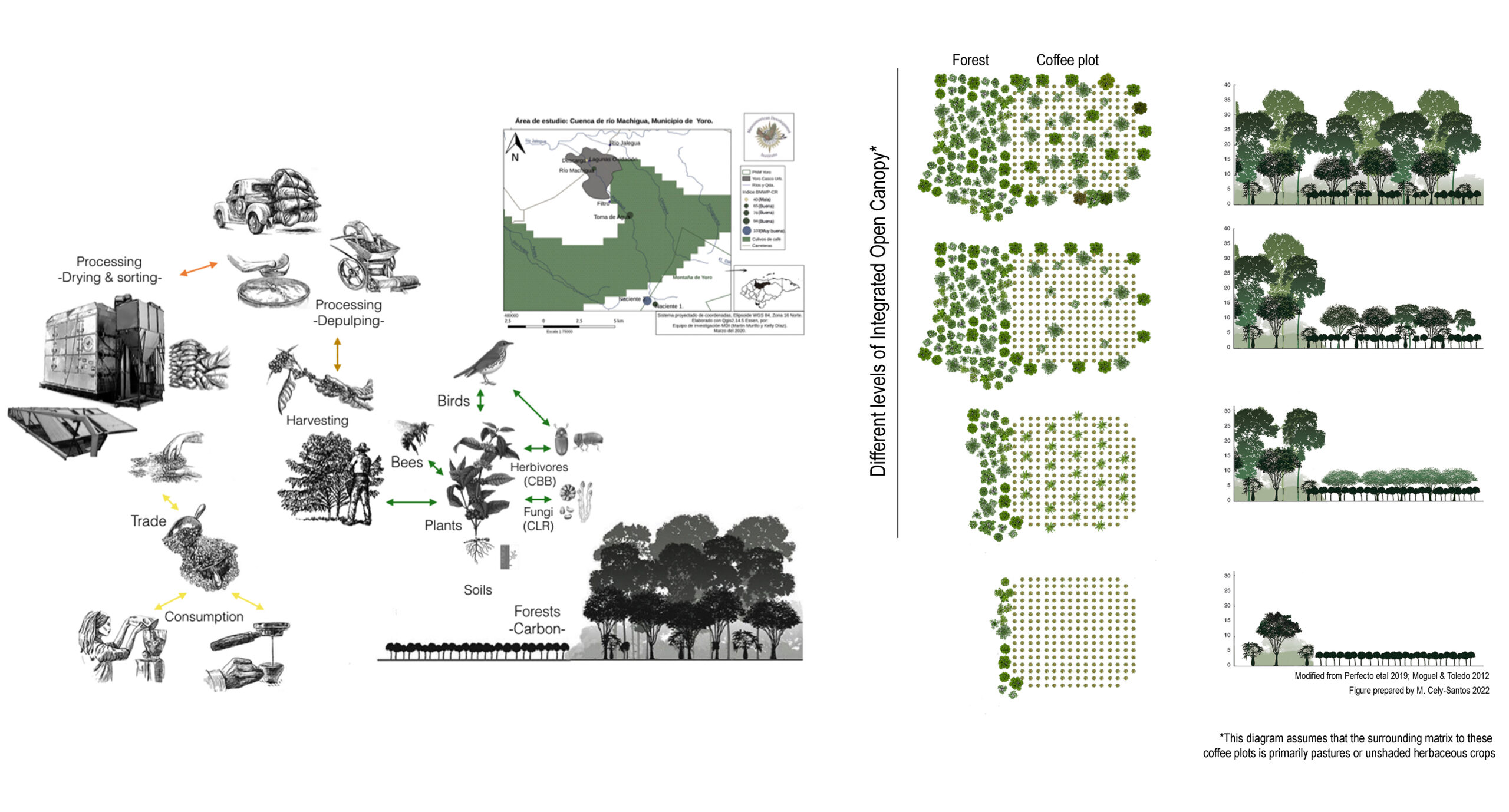
The Integrated Open Canopy (IOC)™ coffee production system has been created as an answer to the need to promote forests around coffee plantations. In IOC systems, coffee plots are surrounded by an equivalent amount of forest, which is especially important for wild birds, mammals, insects, and other species not using shade coffee plantations. These species may contribute to increasing coffee productivity through their roles in the control of pests and diseases, and crop pollination. Besides, trees in IOC™ coffee production can also offer monetary benefits to farmers, as they represent the opportunity to trade carbon sequestered on coffee farms for the direct benefit of producers. However, the IOC™ coffee production system entails redistributing the use of the land and therefore, decisions to be made by farmers.
In phase one of this research, our goal is to evaluate how regional and global conditions affect the social, economic, and environmental sustainability at the scale of an individual farm that uses the IOC™ design. We will use this research as a vehicle for two-way interaction in which we incorporate more farms and local collaborators into the system and modify the system design based on ideas, feedback, and research results. Such an evaluation will be focused on the following aspects of coffee farms (please click on the images to know more):
